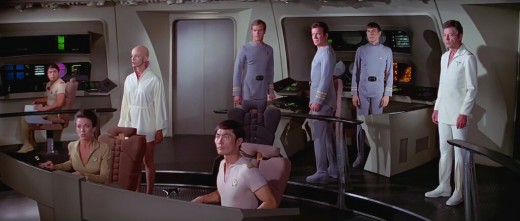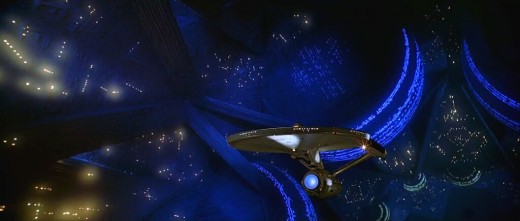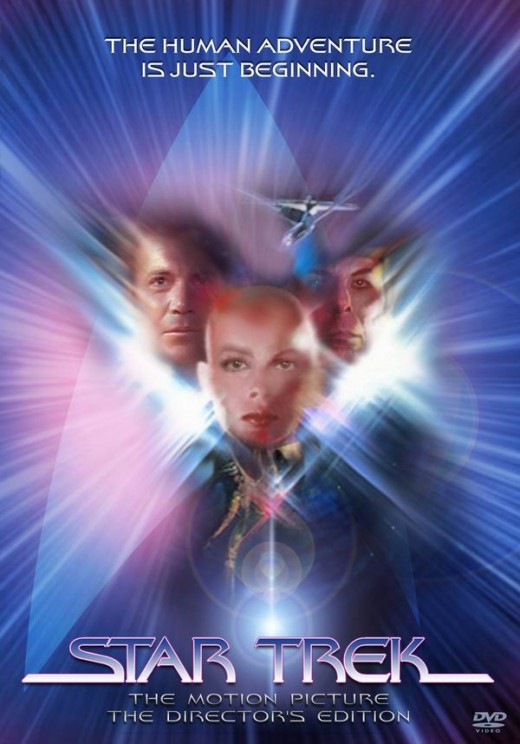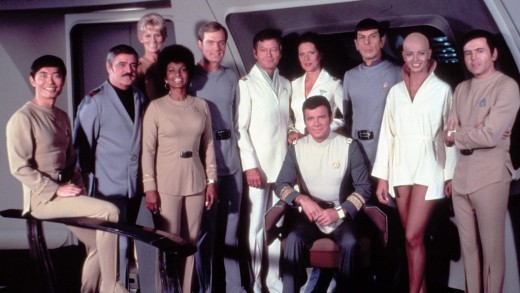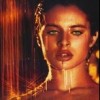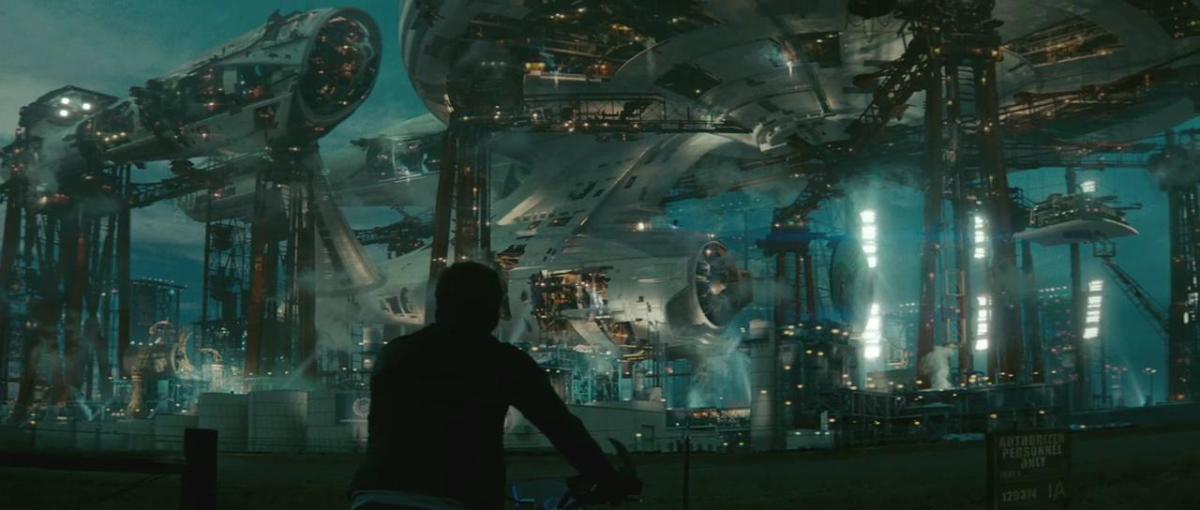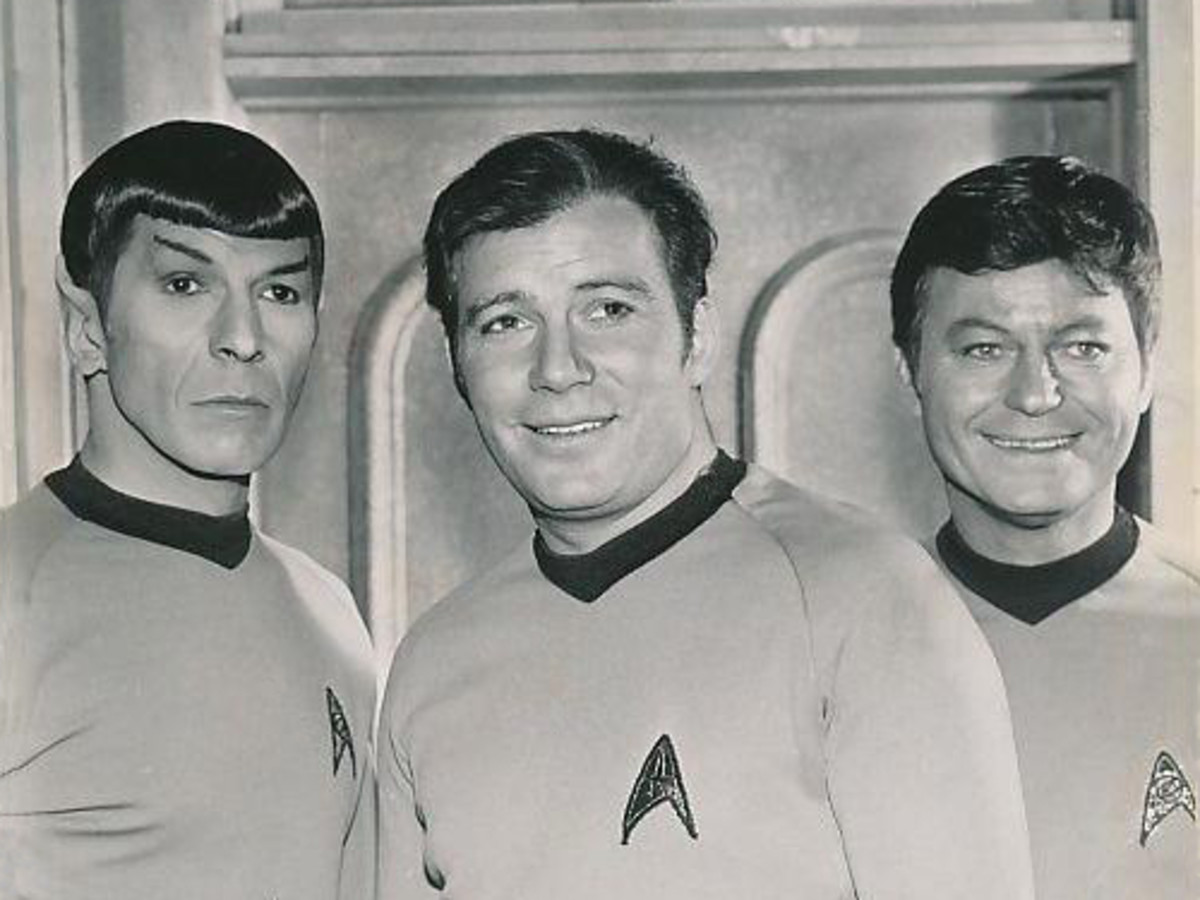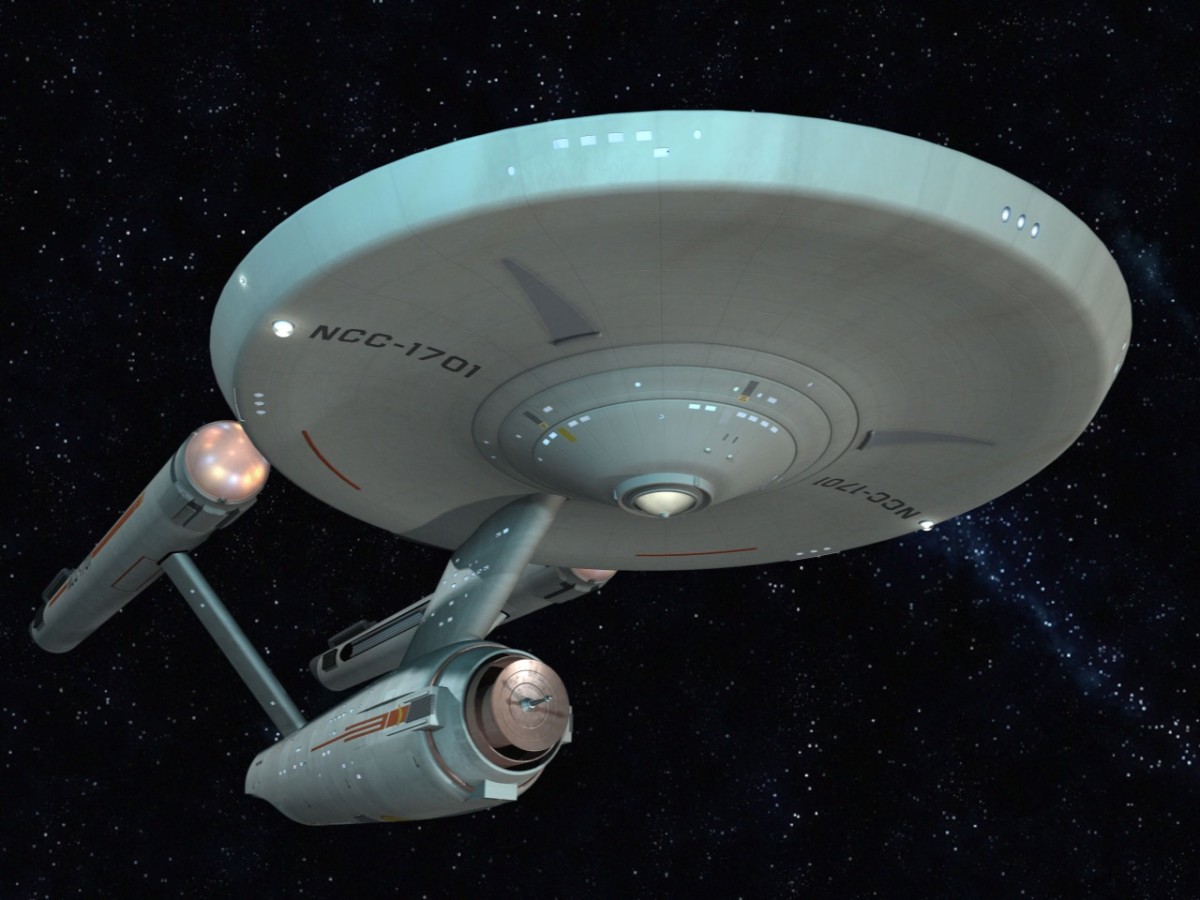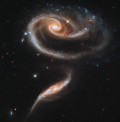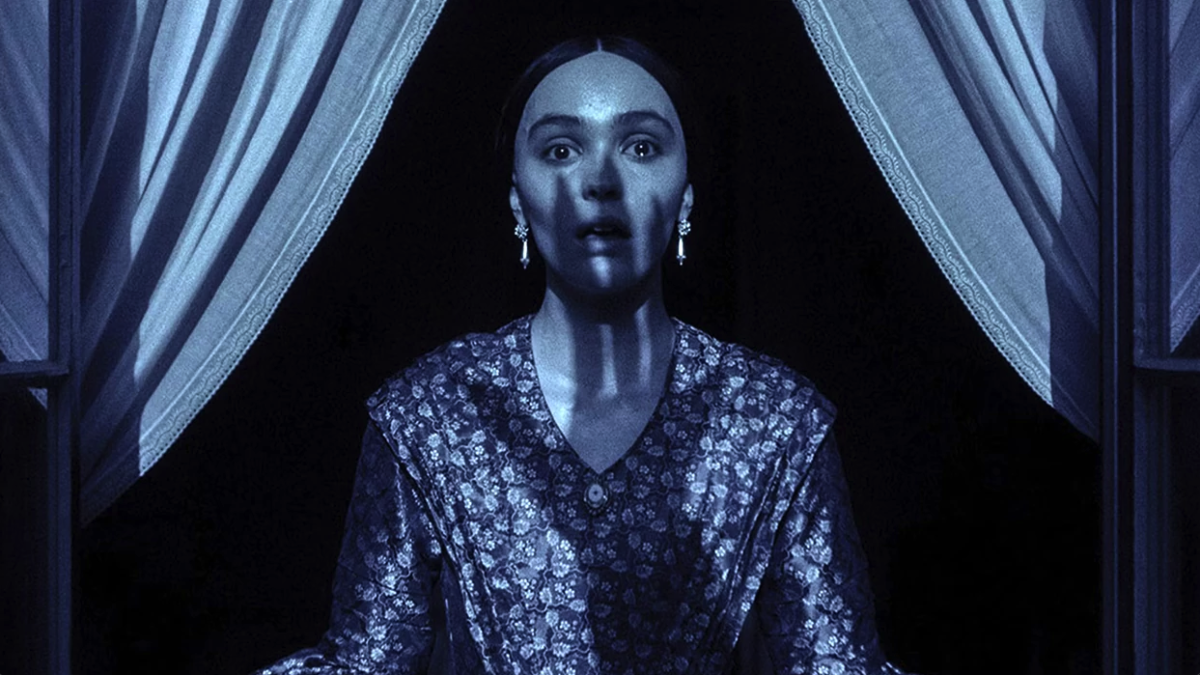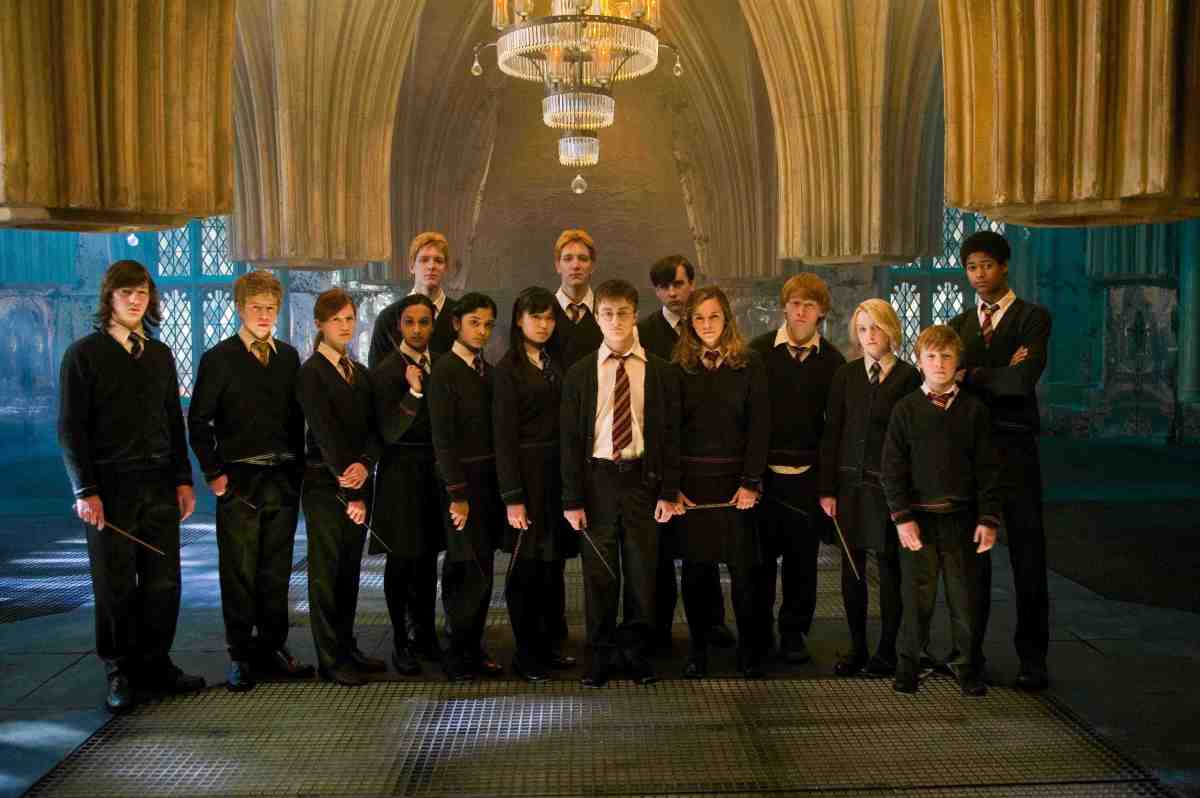Star Trek - The Motion Picture (1979) - An Illustrated Reference

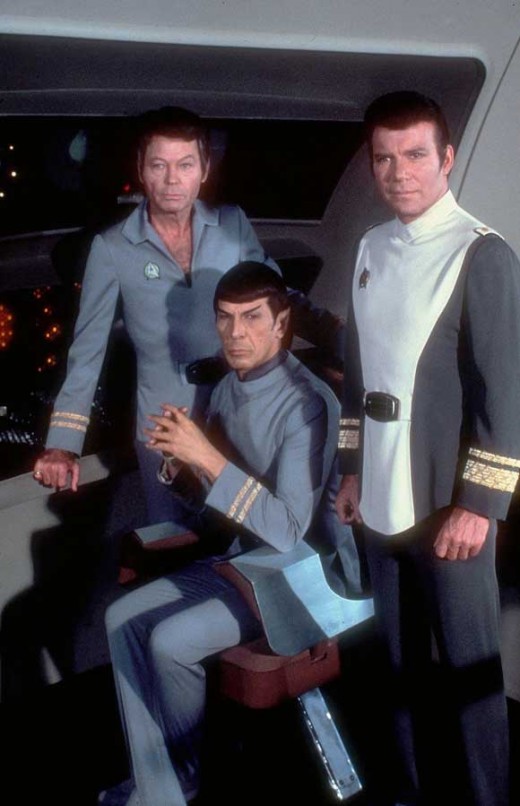
Star Trek: The Motion Picture was directed by Robert Wise. It premiered on 6th December 1979. Starring William Shatner, Leonard Nimoy, DeForest Kelley, James Doohan, George Takei, Walter Koenig and Nichelle Nichols. Screenplay by Harold Livingston. Music by Jerry Goldsmith. 132mins.
An alien entity of unimaginable size is on a direct heading for Earth, the only starship in interception range is the Enterprise, under the command of Admiral James T. Kirk.
Star Trek was created by TV producer Gene Roddenberry (1921-1991) . His idea of a “Wagon-train to the stars” was sold to Desilu Studios and picked up by the NBC network, the pilot episode “The Cage” starring Jeffrey Hunter (1926-1969) as Captain Christopher Pike was rejected and another pilot episode was commissioned “Where no Man Has Gone Before” starring William Shatner as Captain Kirk.
The series began in September 1966 and was cancelled after the third season and 79 episodes. The series went into syndication in the early 70’s and became a phenomenon. Far more popular in reruns than it was in its original run Star Trek was sold to 60 international markets. Fan conventions started appearing, 15,000 fans attended one Star Trek convention in New York in 1974.

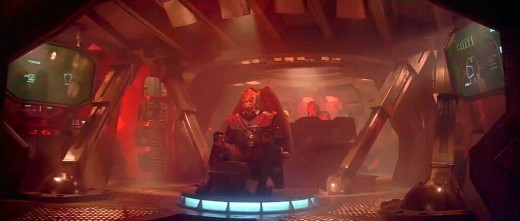
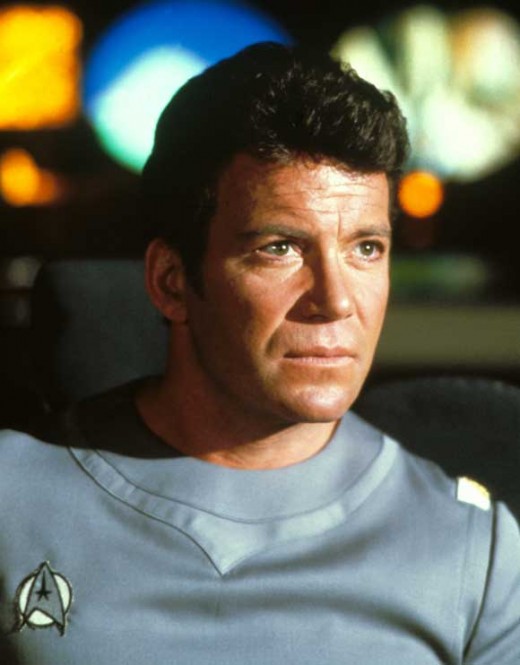
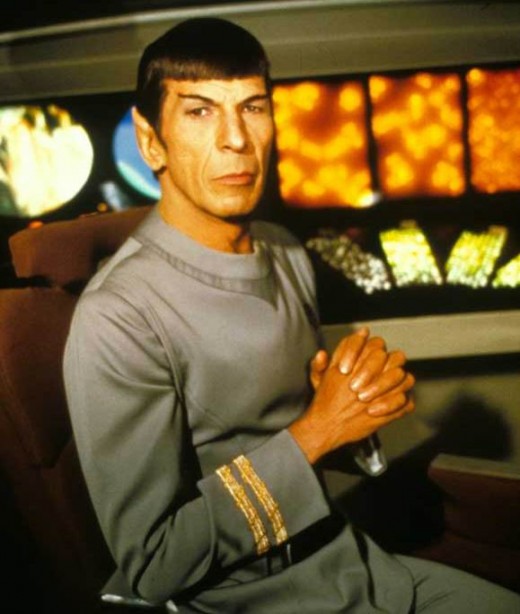
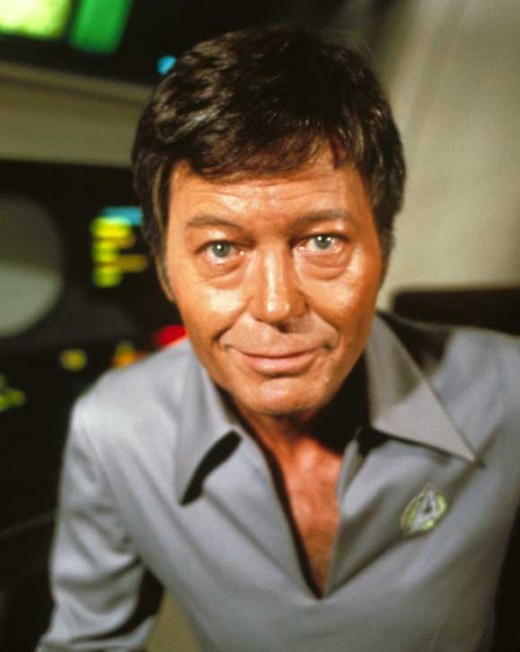
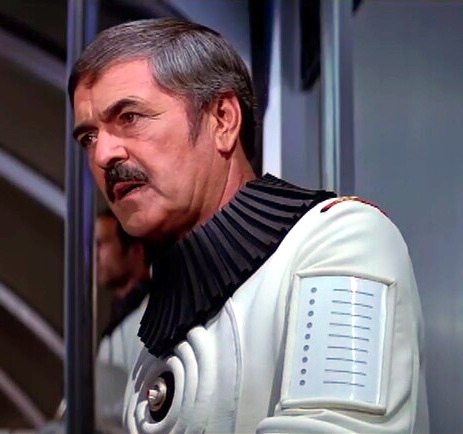
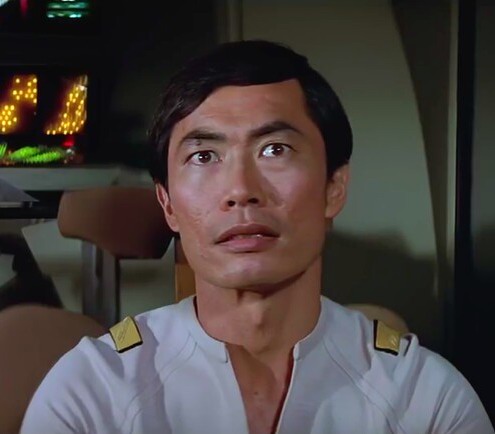
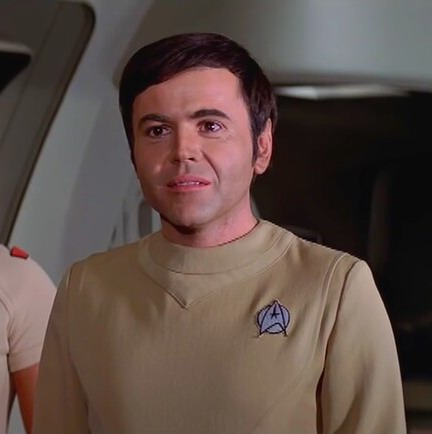
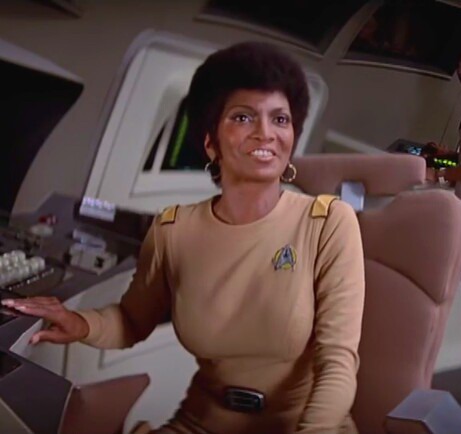
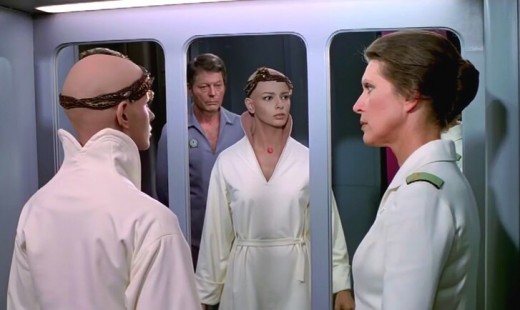
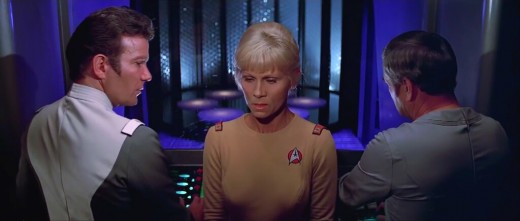
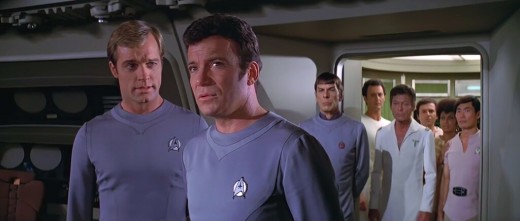
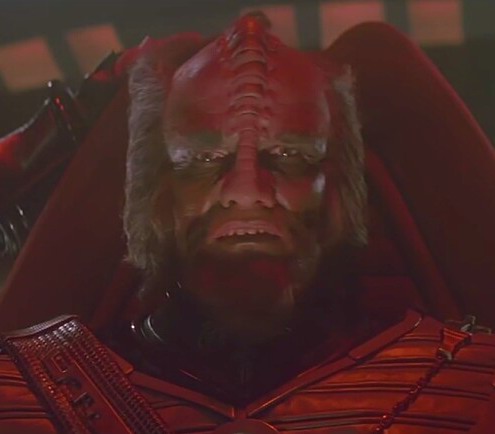
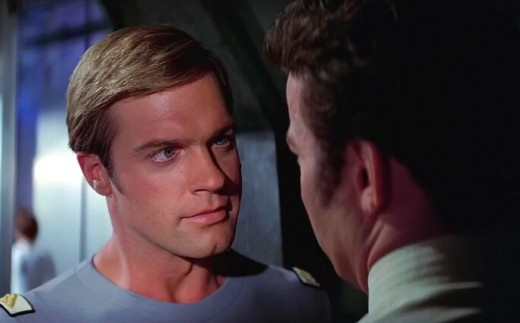
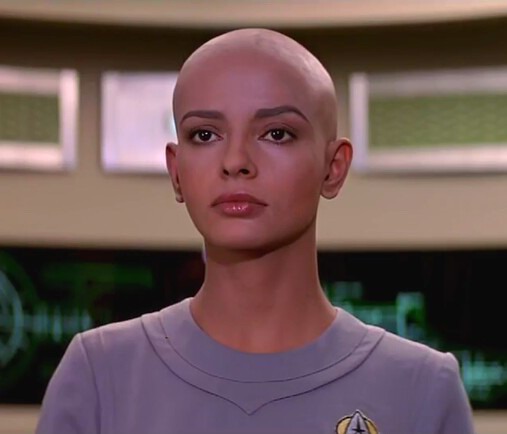
Scotty: Admiral, we have just spent eighteen months redesigning and refitting the Enterprise. How in the name of hell do they expect us to have her ready in twelve hours? She needs more work sir, a shakedown.
Kirk: Mr. Scott, an alien object with unbelievable destructive power is less than three days away from this planet, the only Starship in interception range is the Enterprise! Ready or not, she launches in twelve hours!
William Shatner (1931-) / Admiral James T. Kirk
Born in Quebec, Canada, William Shatner has starred as James Kirk in 7 Star Trek films, his other films include - The Brothers Karamazov (1958), Judgement at Nuremberg (1961), Big Bad Mama (1974), The Devil's Rain (1975), Kingdom of the Spiders (1977), Airplane II (1982), Loaded Weapon 1 (1993), Miss Congeniality (2000), Dodgeball (2004), Over the Hedge (2006) and The Wild (2006).
McCoy: Spock, you haven't changed a bit. You're just as warm and sociable as ever.
Spock: Nor have you, doctor, as your continued predilection for irrelevancy demonstrates.
Leonard Nimoy (1931-) / Mr. Spock
Born in Boston, Massachussets, Leonard Nimoy has played Spock in 7 Star Trek films, his other films include - Zombies of the Stratosphere (1952), Catlow (1971), Invasion of the Body Snatchers (1978), Transformers the Movie (1986), Atlantis the Lost Empire (2001), Land of the Lost (2009) and Transformers - Dark of the Moon (2011).
DeForest Kelley (1920-1999) / Dr. Leonard 'Bones' McCoy
Born in Atlanta, Georgia, DeForest Kelley has appeared as Dr. McCoy in 6 Star Trek films, his other films include - The Men (1950), Illegal (1955), Gunfight at the OK Corral (1957 as Morgan Earp), Raintree County (1957), The Law and Jake Wade (1958), Warlock (1959), Black Spurs (1965), Apache Uprising (1965) Night of the Lepus (1972).
James Doohan (1920-2005) / Cmdr. Montgomery Scott
Born in Vancouver, Canada, James Doohan has played Scotty in 7 Star Trek films, his other films include - Test Pilot (1957), The Wheeler Dealers (1963), The Satan Bug (1965), Pretty Maids all in a Row (1971), Loaded Weapon 1 (1993) and The Duke (1999).
George Takei (1937-) / Lt. Cmdr. Hikaru Sulu
Born in Los Angeles, California, George Takei has appeared as Sulu in 6 Star Trek films, his other films include - Never So Few (1959), Hell to Eternity (1960), Red Line 7000 (1965), The Green Berets (1968), Return from the River Kwai (1989), and Larry Crowne (2011).
Walter Koenig (1936-) / Lt. Pavel Chekov
Born in Chicago, Illinois, Walter Koenig has played Pavel Chekov in 7 Star Trek films, his other films include - Nightmare Honeymoon (1974), Moontrap (1989), Deadly Weapon (1989), Sworn to Justice (1996) and InAlienable (2008).
Nichelle Nichols (1932-) / Lt. Cmdr Nyota Uhura
Born in Robbins, Illinois, Nichelle Nichols has appeared as Uhura in 6 Star Trek films, her other films include - Porgy and Bess (1959), Mister Buddwing (1966), Truck Turner (1974), Snow Dogs (2002), Are We There Yet? (2005) and The Torturer (2008).
Majel Barrett (1932-2008) / Dr. Christine Chapel
Born in Columbus, Ohio, Majel Barrett has also played Dr. Chapel in Star Trek IV The Voyage Home (1986), her films include - The Buccaneer (1958), The Quick and the Dead (1963), A Guide for the Married Man (1967), Westworld (1973), The Domino Principle (1977) and Teresa's Tattoo (1994).
Grace Lee Whitney (1930-) / Janice Rand
Born in Ann Arbor, Michigan, Grace Lee Whitney has appeared in 4 Star Trek films, her other films include - House of Wax (1953), Riding Shotgun (1954), The Naked and the Dead (1958), Pocketful of Miracles (1961), Irma la Douce (1963) and The Man from Galveston (1963).
Mark Lenard (1924-1996) / Klingon Captain
Born in Chicago, Illinois, Mark Lenard appeared as a Romulan commander in the Star Trek first season episode "Balance of Terror". Lenard is best known as Spock's father Sarek. He first played Sarek in the classic second season episode "Journey to Babel" he would resume the role in three of the Star Trek movies and Next Generation series.
Stephen Collins (1947-) / Captain Will Decker
Born in Des Moines, Iowa, Stephen Collins plays Will Decker, son of Commodore Matt Decker of the USS Constellation, played by William Windom in the first season episode "The Doomsday Machine". His films include - All the President's Men (1976), Fedora (1978), Brewster's Millions (1985), Jumpin' Jack Flash (1986), The First Wives Club (1996), Blood Diamond (2006) and The Three Stooges (2012).
Persis Khambatta (1948-1998) / Lt. Ilia
Born in Bombay, India, Persis Khambatta's films include - The Wilby Conspiracy (1975), Conduct Unbecoming (1975), Nighthawks (1981), Megaforce (1982) Warrior of the Lost World (1983) and Phoenix the Warrior (1988).
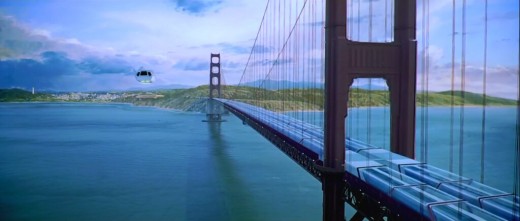
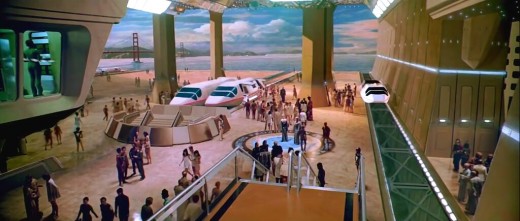
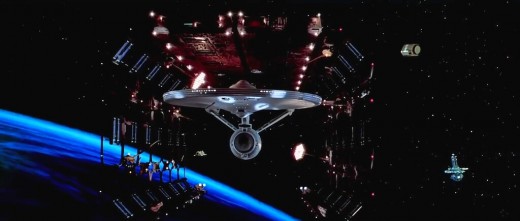
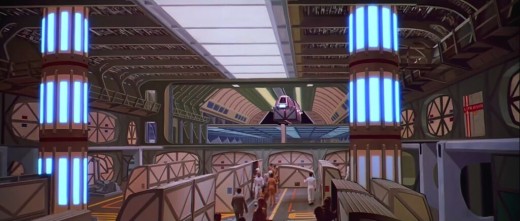

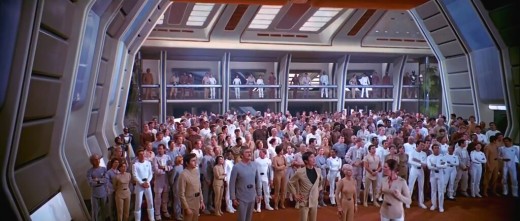


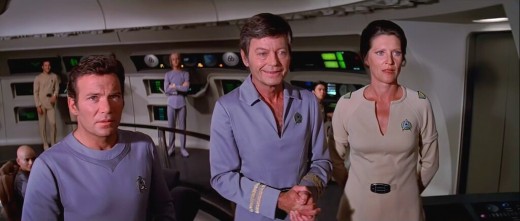


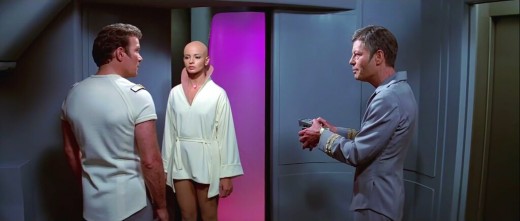
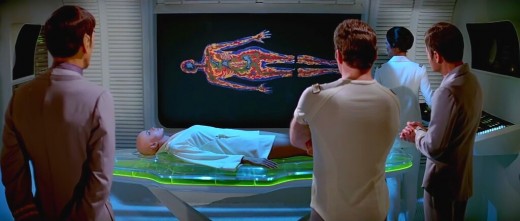
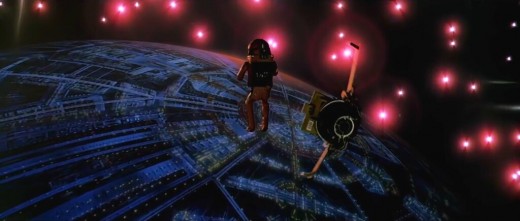
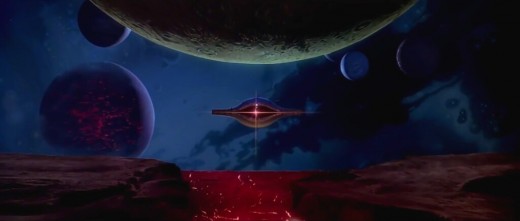
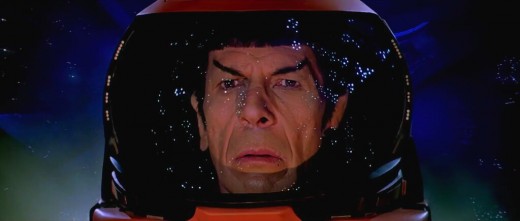
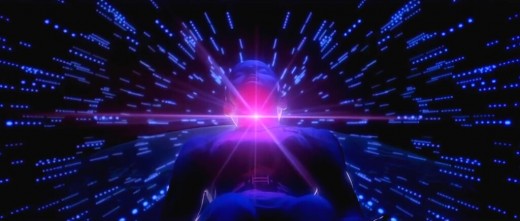
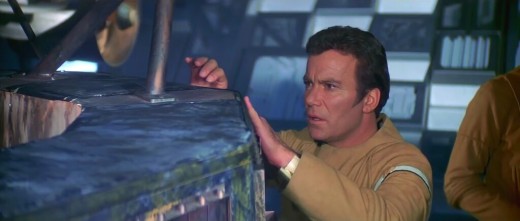
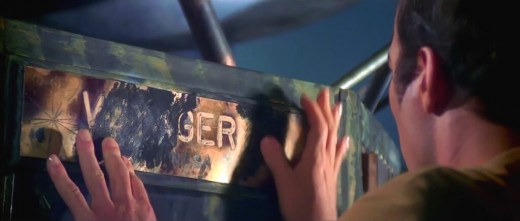

A new Star Trek series was planned in the mid-70’s titled Star Trek Phase II, it was meant to be a new 5 year mission starring the original cast, sets were built and 13 scripts written. It all fell apart when the proposed Paramount Television Service closed down and Star Wars was released to phenomenal box office. Paramount decided to make a Star Trek movie.
One of the stories planned for the pilot of the aborted Star Trek Phase II, “In Thy Image”, about a NASA probe returning to Earth, would be expanded into a screenplay for the first Star Trek movie.
The look of the Klingons in ST-TMP was changed from the 60’s TV series, they now had bony ridged foreheads to make them look more alien. This look was carried over to Star Trek: The Next Generation (1987-1994) and other Star Trek series.
The uniforms of the Enterprise crew in ST-TMP were never used again, the actors hated the uniforms and new ones were designed for the sequel.
Director Robert Wise (1914-2005) was no stranger to science fiction, he directed the seminal sci-fi classic The Day the Earth Stood Still (1951) and 20 years later brought Michael Crichton’s bestselling SF novel The Andromeda Strain (1971) to the screen..
Oscar-winning composer Jerry Goldsmith (1929-2004) created the music score for Star Trek: The Motion Picture. One of his greatest works, the memorable main theme was used as the theme to the series Star Trek: The Next Generation. Goldsmith’s score received an Oscar nomination.
Alexander Courage (1919-2008) composed the famous theme to the original 60’s Star Trek and snatches of it can be heard during the movie.
The movie was beset with problems, wasting months and millions of dollars on special effects that didn’t work the original special effects crew were removed and Douglas Trumbull, creator of the effects for Close Encounters and 2001, came on board as Visual Effects supervisor. The spectacular effects were nominated for an Academy Award, losing to Ridley Scott's Alien.
ST-TMP was one of the most expensive films ever at the time, it cost a massive $45m to make. To put that in perspective the cost of the first two Star Wars movies combined was about $32m.
The film had a record breaking opening weekend in the US, an unheard of at the time $11.8m in 3 days, and the film grossed an impressive $139m worldwide, $82m in US. Every Trek fan in the land must have poured into theatres to see their TV heroes on the big screen.
For the DVD release Robert Wise was given permission by the studio to re-edit the film and create a director's cut closer to what he originally intended for the film had he been given more time back in 1979. Some new visual effects were added.
For the Director’s Cut the original 1979 matte paintings depicting Spock's planet Vulcan with moons were replaced with new mattes after fans complained that Vulcan has no moons.
Slow and ponderous Star Trek: The Motion Picture ultimately was not a fan favourite, with some dubbing it “Star Trek: The Motionless Picture”. There was too much emphasis on visual effects, much of the film consisting of the starship crew staring in amazement at the viewscreen. Unlike the TV show the charismatic actors seem stiff and uncomfortable here.
But personally I have always had a fondness for this first big screen Trek. The stunning special effects particularly those depicting V’Ger’s interior still impress, the extended tour of the Enterprise in space dock was a memorable highlight, And the icing on the cake, a magnificent score by Jerry Goldsmith.
The crew of the Enterprise would return in Star Trek II: The Wrath of Khan (1982).
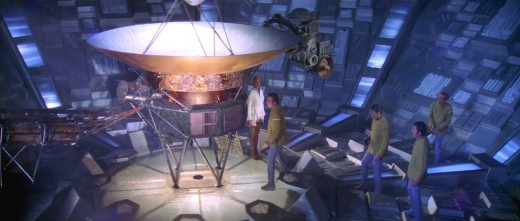
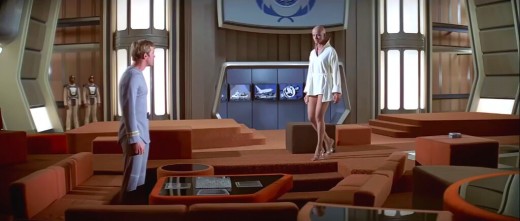
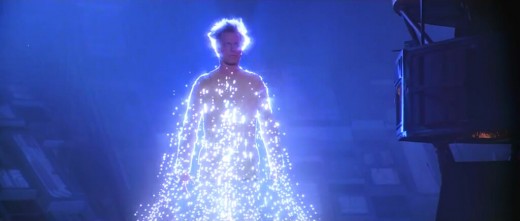
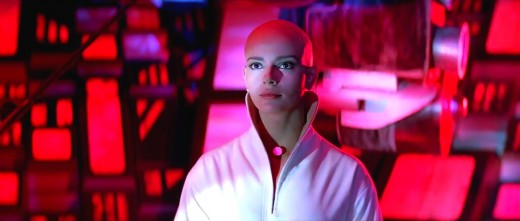

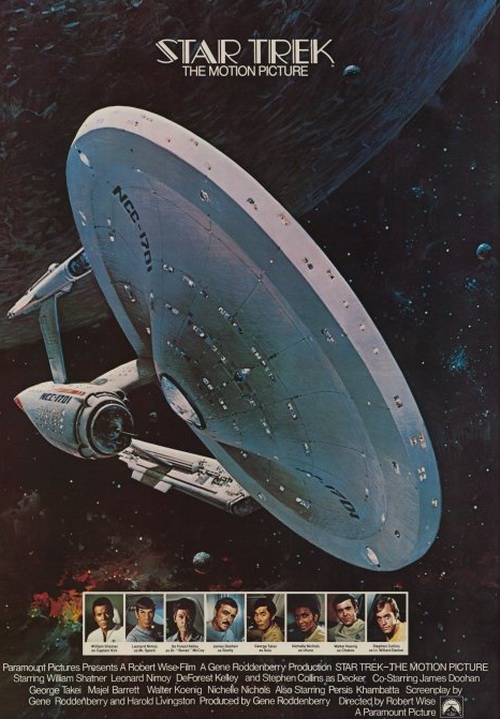
The Critics Wrote -
“The special effects are marvellous but the mumbo-jumbo that passes for dialogue only adds to the tedium.” (News of the World)
“A very well-made piece of work, with an interesting premise... Some of the early reviews seemed pretty blasé, as if the critics didn't allow themselves to relish the film before racing out to pigeonhole it.
My inclination, as I slid down in my seat and the stereo sound surrounded me, was to relax and let the movie give me a good time. I did and it did.” (Roger Ebert)
“A superb piece of work... It benefits from a clever basic premise, a taut script and excellent special effects, impeccably integrated into the movie without self-congratulation by director Robert Wise.” (Alan Frank)
"The formidable Robert Wise, who once directed "The Day the Earth Stood Still" (1951), directed "Star Trek," but I can't imagine what there was for him to do after telling the actors where to stand. Because most of the drama in such a movie is created in the laboratories, the actors are limited to the exchanging of meaningful glances or staring intently at television monitors, usually in disbelief.” (New York Times)
"Producer Gene Roddenberry and director Robert Wise have corralled an enormous technical crew, and the result is state-of-the-art screen magic." (Variety
"Spectacular but ponderous cinema spin-off from the cult TV series." (Chris Tookey)
“The film is about a century too long and will be best appreciated by those who like colourful lighting displays, loud music and bald women.” (Daily Mirror)
